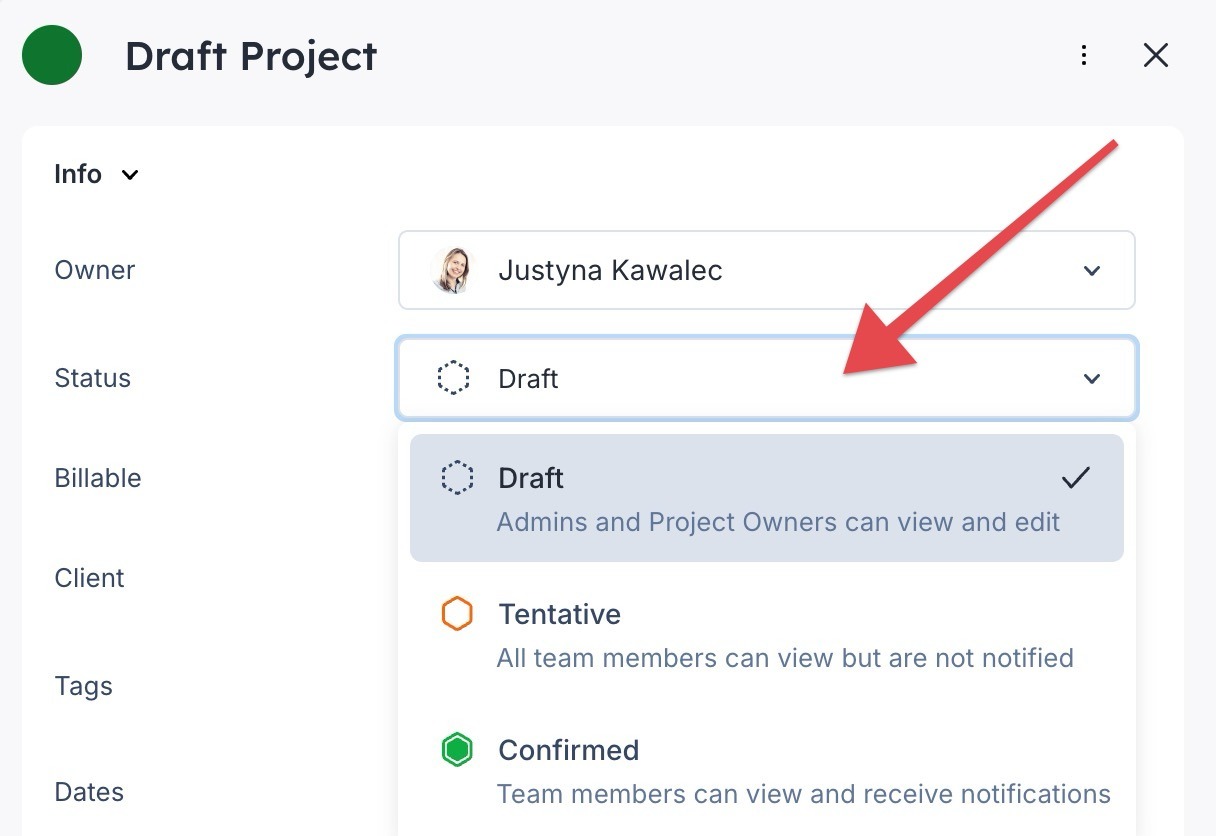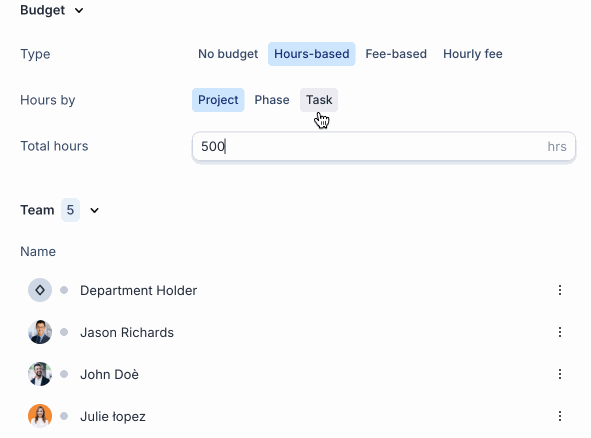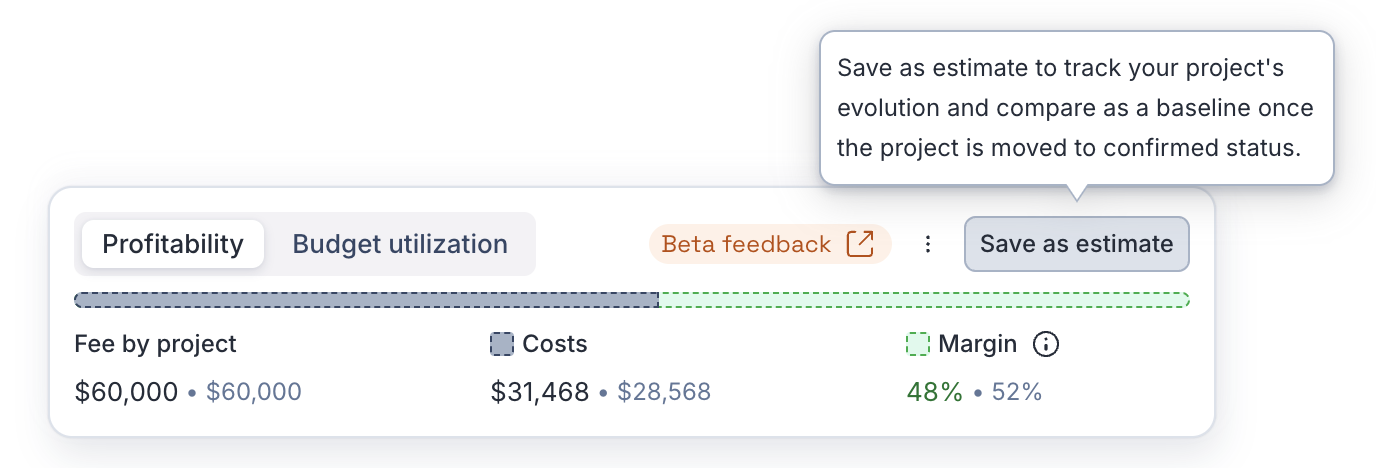Cost estimates aren’t just about getting the number right—they’re about setting the right financial expectations from the outset.
Unfortunately for project and resource managers, humans can’t see into the future and that’s what makes cost estimation for projects a daunting task.
But even if you’re not a clairvoyant, there are several methods and tools to help you create cost estimates that will be close to the project’s actual cost. We’ll cover them below, including:
- What a project cost estimate is
- How to create one
- Methods and tools for cost estimation
Plus, we’ll also give you an example of how one of our customers figured out how to estimate costs for a new project.
What is cost estimation in project management?
Project cost estimation is the process of forecasting the financial resources required to complete a project successfully. It involves analyzing various factors such as labor, materials, equipment, overhead, and other expenses associated with the project to come up with an estimate of the total cost.
Cost estimation is a critical aspect of resource and project management as it provides stakeholders with valuable information for decision-making, budgeting, and resource allocation.
It helps ensure that projects are completed within budget constraints and enables project managers to identify potential cost overruns or risks early in the project lifecycle.
Imagine you’re a digital agency owner about to send a proposal to a client to revamp their website. Your main question is probably: How much is this going to cost us? Well, one way to figure that out is by looking back at a similar project you’ve tackled before: how long it took, who was involved, and what they charged per hour.
If you’ve been storing all this project info in a dedicated resource management tool, accessing these details should be a breeze.
.png)
<cta-box><image-color="yellow">
Get your estimates right with resource management software
Rated #1 on G2 for resource management, Float helps your team accurately price and estimate project costs with a detailed view of your capacity, availability, and budget spend.
<cta-button>Try for free</cta-button>
</cta-box>
5 project cost estimation methods & techniques
You can estimate how much a given project might cost in different ways. Here are five cost estimation techniques and who they might work best for—but remember, this list is not exhaustive.
1. Analogous estimate
Analogous estimation is a top-down approach that uses historical data from similar past projects to estimate the cost of a new one.
Let’s say you want to estimate the cost of an advertising campaign for a new Netflix film: you’d look at the cost analysis of a past project that is similar in size and scope and make some adjustments based on changes in equipment, inflation rates, and resource costs.
This cost estimation technique is best for you if you have a reliable record of the cost and duration of past projects.
2. Bottom-up estimate
Bottom-up estimating is where you estimate the cost for individual tasks or components of a project and then sum them up to get to the total project cost.
It involves creating a work breakdown structure and including overheads for contingencies.
This cost estimation technique is best for projects with a well-defined scope and list of tasks.
👉 Quick PSA: While this method is useful, it can be taken too far. Estimating hours at the individual task level is often too granular and restrictive—especially early in the planning process. At Float, we recommend estimating by phase or role (e.g., allocating 10% of a team member’s time over a month), rather than attempting to predict exact hours for each task. This gives your team more autonomy and leads to more realistic estimates—because let’s face it, work rarely unfolds exactly as scoped.
3. Parameter estimate
Parameter estimation is a method that makes predictions or estimates based on specific characteristics or data points. It’s like making an educated guess using known factors or measurements.
For instance, a paid ad agency estimates that reaching the target audience on a specific platform might cost $4,000 based on past campaigns and the client’s objectives. So they project that creating multiple ad variations could cost $10,000, and they sum up these estimated costs to provide the client with an overall estimate for the advertising campaign.
Parametric estimation works best when you have a lot of information from similar projects in the past.
4. Three-point estimate
A three-point estimation is a way to calculate a project’s cost based on likely, optimistic, and pessimistic cost projections.
The benefit of a three-point estimation is that it ties a project’s costs to uncertainties and risks, which allows you to plan for "worst-case" scenarios.
Let’s say you’re to find the cost of building a new website. Your estimate could look like this:
💰 Likely cost: $10k
😃 Optimistic costs: $7.5k
😟 Pessimistic costs: $15k
These three figures become a basis for building an average estimate. Simply add them together and divide by three:
10,000 + 7,500 + 15,000 = 32,500
32,500 ÷ 3 = 10,833
As a result, the average project estimate is $10,833.
Three-point estimates are best for where there’s a lot of uncertainty or variability in the tasks or projects.
5. Ballpark estimate
A ballpark estimate will give you the approximate value of a project based on the combination of similar projects you’ve done in the past and expenses unique to the particular project.
Let’s say your client needs a website built and your team has done similar projects in the past for $10k. Using the ballpark estimate, the cost might range from -25% to +50% ($7.5k - $15k).
Ballpark estimates are best used when there’s limited information available like at the start of a project.
<tip>
Pro tip: plan for profit from the start
No matter how you estimate, seeing your margins early gives you a clearer picture of project profitability. With Estimates in Float, you’ll know exactly what it’ll cost to deliver the work—and the profit you can expect—before the project even kicks off.
</tip>
How to create accurate cost estimates in Float
Float’s estimation workflow lets you go from rough scope to costed plan to client-ready quote—without ever leaving your project view.
Here is a summary of how you can create accurate project estimates using our tool:
1. Start with a draft project
Create a new project in Draft mode. This keeps it private from the wider team while you scope out work and won't flow onto the live time schedule.
You can use a project template to pre-fill tasks and phases, or build the timeline from scratch. Set the project as billable, choose a likely start date, and begin blocking out the phases of work.

If you don’t have any projects in Float, you can sign up for a free 30 day trial, import your project details in, and get started. You can learn how to get set up with this guide.
2. Build your team plan and allocations
Map your phases and assign roles using percentage or hourly allocations. You’ll see costs start adding up in real time in the project overview bar, based on each person’s cost rate.
Layer in key roles at the right moments—like a brand strategist for early input, a designer for mid-stage build, and a developer for launch. You can use placeholders if you plan to hire freelancers.

3. Calculate your quote and update your budget
Once you’ve estimated the internal cost of delivery (e.g., $30,000), apply your desired margin to calculate the client quote (e.g., 50% margin = $60,000 fee). Add this as the budget for the project.
Float will calculate your profit margin automatically.

4. Save and baseline your estimate
Click Save as estimate (beta) to snapshot your current plan. This becomes your baseline, which you can compare against scheduled and logged hours later.
If your quote changes—say the client pushes for a lower budget—you can revise your plan, adjust resources, or substitute junior team members, then save a new version as the baseline.

A real-life cost estimate example for new projects (without past data)
One of our customers, a marketing and communications company, took on a project they had never worked on before (we’re not going to share their name to protect their privacy).
Since they had not done similar projects in the past, they anticipated a learning curve and expected to spend more time than initially scoped due to several potential client revisions.
To accommodate this uncertainty, they added buffers—increasing the estimated cost by 50% and extending the project duration from 30 to 45 or 50 working days.

These measures allowed them to manage additional costs caused by a slower pace and multiple rounds of client feedback.
Use resource management software to track and control costs in real-time
Getting budget sign-off is just the beginning—the real challenge is staying on target. And that’s where Float shines. As your dedicated resource management tool, Float connects your estimates to actual project delivery, so you can manage spend without the spreadsheets.
From the moment you create your estimate, Float tracks how it holds up. Once your project’s live, you can compare your baseline estimate against both scheduled hours and time logged—directly in the project view or the single project report. No digging required.
You can choose from five budget types—hours only, cost only, hourly fee, fixed fee, or a combo—to track what matters most. Each team member’s cost and bill rate is applied automatically, giving you a live view of fee, cost, and margin data at every stage of the project.
Want to dig deeper? Break down costs by phase or role, see how much budget is left, and spot overages early with built-in alerts. If your project’s costs overrun, Float shows you where—and gives you the context to course-correct quickly.

FAQs
Some FAQs about project cost estimation
Several elements can influence cost estimates. These cost elements include:
- Scope of work
- Labor cost
- Material costs
- Equipment costs
- Project duration
- Market conditions
- Location factors
- Inflation rates
- Contingency allowances
Cost estimating can be performed by various individuals or teams depending on the nature and size of the project. This may include project managers, cost estimators, engineers, financial analysts, and other relevant stakeholders.
Choosing the right estimating software depends on several factors, including the specific needs of your organization, the complexity of your projects, your budget, and the features you require.







.jpg)



